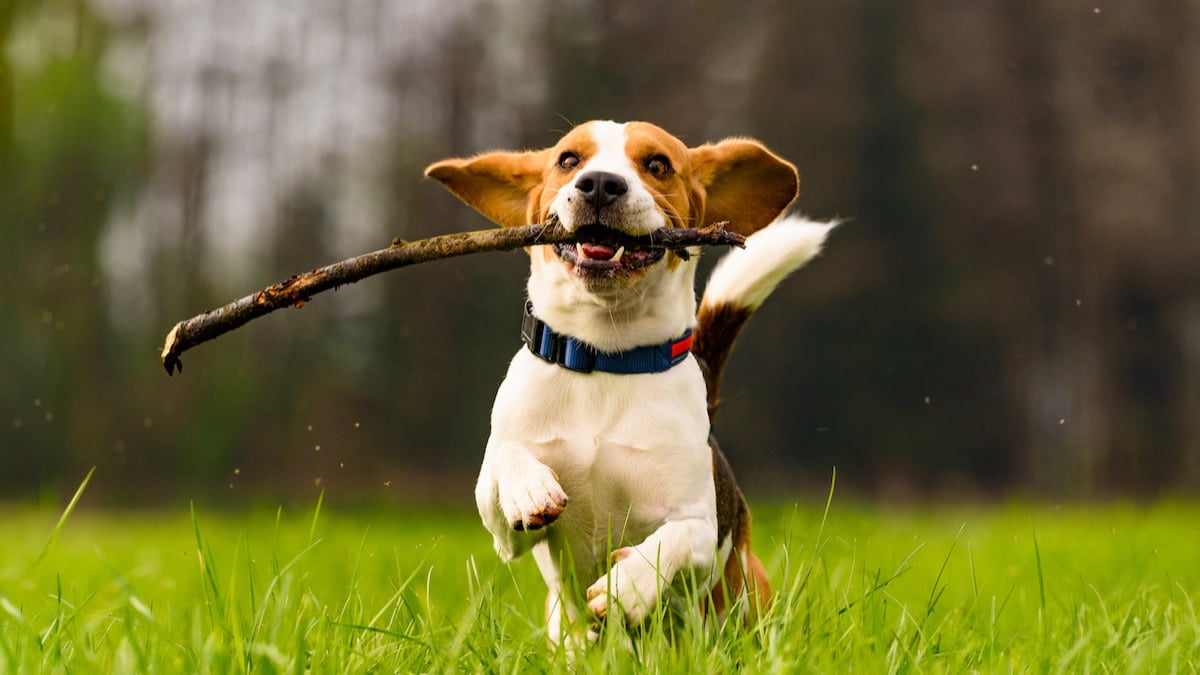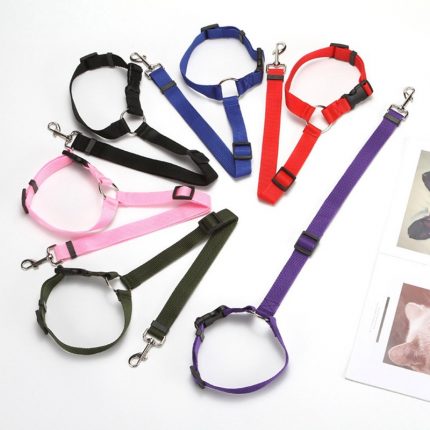Why Do Dogs Carry Sticks?
Dogs have been our loyal companions for centuries, captivating us with their playful nature, unwavering loyalty, and quirky behaviors. One such behavior that often leaves us puzzled is their innate tendency to carry sticks. Whether it’s a small twig or a hefty branch, dogs seem to find great joy in picking up and carrying these objects during their walks or playtime. But what drives this peculiar behavior? Why do dogs feel the need to carry sticks?
To understand this behavior, we must delve into the evolutionary history of dogs. Dogs, as descendants of wolves, have retained certain instinctual behaviors from their wild ancestors. In the wild, wolves often carry objects in their mouths to mark their territory or communicate with other pack members. This behavior can be seen as a way of leaving their scent on objects and claiming ownership over them. While domesticated dogs may not have the same territorial instincts as wolves, the act of carrying sticks can still be traced back to this primal behavior.
Another reason why dogs carry sticks is rooted in their natural instincts as predators. Dogs are born with a strong prey drive, and carrying sticks can simulate the feeling of carrying prey in their mouths. This behavior can be seen as a form of play or hunting simulation, allowing dogs to engage their natural instincts and fulfill their desire to chase and carry objects.

Furthermore, carrying sticks can serve as a source of mental and physical stimulation for dogs. Dogs are intelligent creatures that require regular mental and physical exercise to stay happy and healthy. Carrying sticks provides them with an opportunity to engage their minds and bodies, especially during walks or play sessions. It gives them a sense of purpose and accomplishment, as they proudly parade around with their newfound treasure.
Additionally, carrying sticks can also be a form of comfort for dogs. Dogs are known for their strong attachment to their owners, and carrying a stick can serve as a security blanket of sorts. The stick becomes a familiar object that provides them with a sense of security and comfort, especially in unfamiliar or stressful situations. It serves as a source of emotional support, offering them a sense of familiarity and stability.
In conclusion, the act of dogs carrying sticks can be attributed to a combination of instinctual behaviors, prey drive, mental stimulation, and emotional comfort. It is a behavior deeply rooted in their evolutionary history as descendants of wolves. So, the next time you see your furry friend proudly trotting around with a stick in their mouth, remember that it’s not just a random habit but a reflection of their natural instincts and their desire for play, stimulation, and a sense of security.
The Fascinating Reasons Behind Dogs Carrying Sticks
Instinctual Behaviors and Primal Origins
Dogs, as descendants of wolves, have inherited certain instinctual behaviors from their wild ancestors. One of these behaviors is the act of carrying objects in their mouths, which can be traced back to their territorial instincts. Wolves often mark their territory by leaving their scent on objects, and carrying sticks can be seen as a way for dogs to claim ownership and leave their mark. This behavior is deeply ingrained in their primal instincts and serves as a way of communicating with other pack members.
Playful Prey Drive
Another key reason why dogs carry sticks is their innate prey drive. Dogs are natural predators, and carrying sticks can simulate the sensation of carrying prey in their mouths. This behavior allows them to engage their hunting instincts and fulfill their desire to chase and capture objects. It is a form of play and serves as an outlet for their natural instincts, providing them with mental and physical stimulation.
Mental and Physical Stimulation
Carrying sticks also offers dogs a valuable source of mental and physical exercise. Dogs are intelligent creatures that require regular stimulation to stay happy and healthy. When they pick up a stick, it becomes a task for them to manage and balance in their mouths. This engages their cognitive abilities and provides them with a sense of purpose and accomplishment. Moreover, carrying sticks during walks or play sessions helps dogs expend physical energy, keeping them physically fit and mentally satisfied.
Comfort and Security
Interestingly, carrying sticks can also provide dogs with a sense of comfort and security. Dogs are known for their strong attachment to their owners, and a stick can become a source of emotional support for them. The stick serves as a familiar object that they can carry around, especially in unfamiliar or stressful situations. It offers them a sense of familiarity and stability, similar to a security blanket. This behavior can be particularly noticeable in dogs that exhibit separation anxiety or are in new environments.
Conclusions
In conclusion, understanding why dogs carry sticks can provide valuable insights into their natural behaviors and instincts. For more in-depth information on this topic, consider exploring geepets.com, where a variety of canine behaviors are discussed and analyzed by experts. Additionally, for further reading on the subject and to delve deeper into the psychology behind common dog behaviors, the American Kennel Club (akc.org) offers a wealth of resources. Both of these sites can serve as excellent starting points for pet owners looking to understand and foster better relationships with their furry companions.

Practical Recommendations for Understanding and Encouraging Dogs’ Stick-Carrying Behavior
1. Safety First: Choose Suitable Sticks
When allowing your dog to carry sticks, it’s important to prioritize their safety. Avoid sticks that are too large, heavy, or have sharp edges that could potentially harm your dog. Opt for smaller, lightweight sticks that are easy for your dog to carry and won’t pose a risk to their well-being.
2. Supervise and Monitor
While stick-carrying can be a fun and natural behavior for dogs, it’s crucial to supervise and monitor them during this activity. Keep an eye out for any signs of discomfort, choking hazards, or potential injuries. Regularly inspect the sticks your dog chooses to carry to ensure they are safe and free from splinters or other hazards.
3. Provide Alternative Toys and Objects
To offer variety and stimulate your dog’s playtime, and perhaps to better understand why do dogs carry sticks, provide them with a range of alternative toys and objects to carry. This approach not only addresses the question of why do dogs carry sticks but also helps in diverting their attention to safer and more diverse forms of play.
Including specially-designed dog toys, soft plush toys, or even safe chew sticks can prevent excessive stick-carrying, a behavior that often leads us to ponder why do dogs carry sticks in the first place. By diversifying their options, you give them a wider range of objects to engage with, further minimizing the fascination and need to carry sticks.
Understanding why do dogs carry sticks can be complex, involving aspects of their natural instincts and behaviors, but by providing a variety of engaging toys, you can satisfy their urge to carry and chew while steering them towards safer and more appropriate activities. This strategy not only enriches their playtime but also offers insight into the behavioral pattern of why do dogs carry sticks, ensuring they remain happy and stimulated without relying solely on sticks for entertainment.
4. Engage in Interactive Play
Engaging in interactive play sessions with your dog is an excellent way to redirect their stick-carrying behavior, often prompting the question, “Why do dogs carry sticks?” Use interactive toys such as frisbees, balls, or tug ropes to encourage playfulness and satisfy their natural instincts. This not only provides mental and physical stimulation but also strengthens the bond between you and your furry friend.
Incorporating these toys can shed light on the question, “Why do dogs carry sticks?” by offering alternative items that fulfill the same need for carrying and chewing. Understanding “Why do dogs carry sticks?” can enhance these play sessions, as it reminds us of their instinctual behaviors and the importance of addressing them through engaging activities. By focusing on the “Why do dogs carry sticks?” query, you can tailor your interactive play sessions to directly counteract this
5. Training and Positive Reinforcement
If your dog’s stick-carrying behavior becomes problematic or interferes with their safety, you might wonder, “Why do dogs carry sticks?” as you consider implementing training techniques to modify their behavior. Understanding “Why do dogs carry sticks?” can provide insight into their natural instincts and help tailor your training approach. Teach them the “drop it” or “leave it” command to encourage them to release the sticks when necessary.

This is particularly important when considering “Why do dogs carry sticks?” and the potential risks involved. Utilize positive reinforcement techniques such as treats, praise, and rewards to reinforce desired behaviors and discourage excessive stick-carrying. Addressing the question, “Why do dogs carry sticks?” through these training methods not only ensures their safety but also nurtures a well-behaved companion.
6. Seek Professional Guidance
If you’re struggling to manage or understand your dog’s stick-carrying behavior, a question that might frequently come to your mind is, “Why Do Dogs Carry Sticks?” Don’t hesitate to seek professional guidance to delve deeper into this query. Consulting with a certified dog trainer or behaviorist can provide personalized advice and strategies to address any concerns or challenges you may be facing, especially when trying to comprehend the reasons behind “Why Do Dogs Carry Sticks?”
They can help you develop a tailored training plan to modify the behavior effectively, ensuring that you gain a thorough understanding of “Why Do Dogs Carry Sticks?” and how it influences your dog’s actions. This professional insight will not only address the immediate behavior but also enrich your knowledge about “Why Do Dogs Carry Sticks,” fostering a more harmonious relationship between you and your pet.
7. Health Check-ups
Regular veterinary check-ups are essential to ensure your dog’s overall health and well-being. During these visits, discuss your dog’s stick-carrying behavior with your veterinarian. They can assess any potential dental issues, jaw problems, or underlying health conditions that may be contributing to excessive stick-carrying. Following their guidance can help address any underlying health concerns and ensure your dog’s optimal health.
Our featured products:
Remember, understanding and appreciating your dog’s stick-carrying behavior is key to providing them with a fulfilling and enriching life. By implementing these practical recommendations, you can ensure their safety, promote their mental and physical well-being, and strengthen the bond between you and your beloved furry companion.















